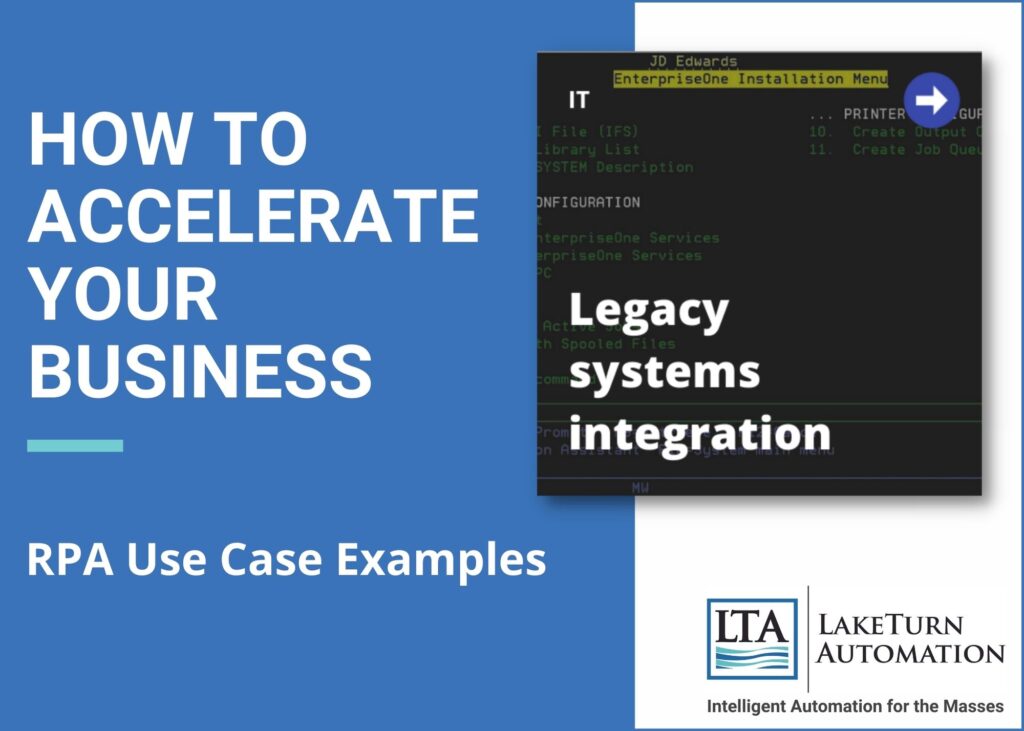Per Oxford, a Legacy System denotes “software that has been superseded, but is difficult to replace.” Clearly, DIFFICULT should be capitalized, as legacy systems support has made the list of Top 10 Organizational IT Expenses in the Society for Information Management’s 2018, 2019, 2020 & 2021 IT Trends studies. Fortunately, RPA (Robotic Process Automation) can help reduce these expenses and extend the lifespan of aging legacy applications.
Most organizations (big and small) struggle with managing and integrating “legacy” systems. These systems are typically an “off the shelf” application no longer supported, an enterprise “home-grown“ system from years back, or perhaps a critical departmental solution built by a former employee (ex. Excel Macros/VBA or Microsoft Access) that lacks documentation or support. Regardless of their history or origin, legacy systems provide significant challenges when integrating their old technology stacks with newer systems and infrastructure.
Since legacy systems do not provide API’s for easy integration, expensive and complicated custom-built integrations are required for them to “communicate” with current technologies. Since RPA tools operate at the user interface (i.e., keyboard) level, software bots can quickly be built to utilize legacy systems’ existing data-input and inquiry screens to input and extract data. From AS/400 “green screens” to Microsoft Access entry forms, if a human can input or extract data, an RPA bot can be built to utilize the system in precisely the same way.
The benefits of utilizing RPA bots for legacy integration are numerous and include:
INCREASE SPEED AND DECREASE COSTS
By leveraging the existing user interface (UI), a software bot can quickly be deployed to utilize the built-in legacy screen-based system edits and application processing. This UI-based approach dramatically simplifies and expedites integration construction while eliminating the high costs of building traditional “handcrafted” solutions for every legacy integration point.
EASILY CONNECT 20th CENTURY APPS TO 21st CENTURY TECHNOLOGY
By utilizing RPA’s vast technology stack integration capabilities (ex, websites, cloud applications, desktop applications, Microsoft Office Suite, Google Suite, Optical Character Recognition, APIs, webhooks, AS/400, etc.), aging legacy applications can quickly be retrofitted to share data with any modern enterprise application.
EXTEND THE LIFESPAN OF “IF IT AIN’T BROKE, DON’T FIX IT” LEGACY APPS
There is a reason so many legacy applications are still in use. Many are silent and reliable back-office workhorses that have provided organizations the necessary time and focus required to modernize their key customer-facing front-office applications. Utilizing RPA for legacy integrations provides these critical systems a longer lifespan, allowing the organization to continue to focus on its ever-growing list of pressing technology initiatives.
As you can see, Robotic Process Automation can dramatically decrease the efforts, costs, and organizational risks associated with utilizing legacy systems. Additionally, RPA-enabled systems integrations can help extend the retirement runway for aging applications, providing additional time for complex system migration planning and execution.
Contact us to learn more about utilizing RPA to quietly and effectively keep your legacy systems on life-support so that you can increase the focus, investment level, and execution of your critical system modernization strategies.
